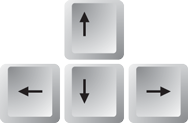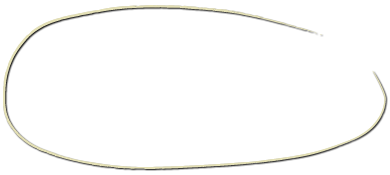 DNASkittle
DNASkittle DNASkittle
DNASkittleGenome Library > Animalia > Mammalia > Homo > Sapiens
Repeat Overview is a color based overview of the Repeat Map. Each pixel in the overview is built from one full line of Repeat Map at width 24. It looks for the maximum score anywhere on a Repeat Map line. The brightness of the pixel represents the highest score. Dark areas of the overview mean there are no repeats. The color in bright areas represents the length (frequency) of a tandem repeat that is detected.
There are no settings for this graph
This graph is a heatmap that shows how similar each row is to every other row on the screen. Red represents positive correlation, blue is negative, with black being neutral. The red blue spectrum is normalized to account for baseline correlation from genome wide patterns. The structure of a heatmap is diagonally symmetrical. The diagonal red line is self compared with self. Each pixel represents a comparison between two other lines. To see which lines are involved in a comparison trace one line straight down to the diagonal and another line to the left. The Similarity Heatmap is useful to visualize the blocks of similar code found in the genome, such as large tandem repeats, and isochores at all scales. The patterns in Similarity Heatmap correlate strongly with those generated from Hi-C experiments to map chromosome territories.
There are no settings for this graph
This bar graph shows how often each nucleotide occurs per line. It uses the same color palette as Nucleotide Display.
There are no settings for this graph
Each row is one display line equal to width. Each column matches one oligomer of fixed size, arranged in alphabetical order (i.e. AA, AC, AG...). The brightness of the pixel indicates how often that oligomer occurred compared to all the others.
There are no settings for this graph
This graph is the raw data used to calculate the Threemer Detector graph. The x-axis of Frequency Map represents offsets +1 to +60. The grey value of each pixel is the number of matching characters in the line compared with the sequence shifted to the offset. Threemer patterns show up as faint dark-dark-light dark-dark-light pixel patterns. These patterns are often associated with exons.
There are no settings for this graph
The four nucleotides of DNA are represented by four colors. A=Black, T=Blue, C=Red, G=Green. The pixels are arranged across the screen like text, reading from left to right, then jumping to the beginning of the next line when it reaches the width. If width is set at a multiple of a tandem repeat, the repeat will appear as vertical bars.
There are no settings for this graph
Threemer detector was designed to detect the weak 3 periodicity signature associated with codons inside protein coding regions. It is much more sensitive than Repeat Map, but only detects a single periodicity. Exon annotations are generally marked by a 3-mer spike. Strong 3-mer signals outside of exon annotation that are not simple repeats merit further research.
There are no settings for this graph
Repeat Map is used for identifying tandem repeats without the need for continually adjusting the width in Nucleotide Display. It identifies periodicity of repeated sequences by checking all possible offsets scored by Pearson Correlation displayed in grayscale. The x-axis of the graph represents periodicity, starting at offset 1 on the left and increasing geometrically to offset 6,144 on the right. This growth curve means that Repeat Map can accurately detect 2bp periodicities simultaneously with segmental duplications. Vertical white lines show regions that contain tandem repeats. Most of the graph will be 25-30% gray from random chance. Black spots are created when two regions with opposite biases are compared as in the case of a CG repeat being compared with an AT repeat region.
There are no settings for this graph
A graph to show sequence snippets that match a detected tandem repeat.
There are no settings for this graph
Select a different genome and chromosome

Display and hide available visualizations
While the Move Tool is selected you can click and drag to reposition the graphs
When selected, clicking nucleotide display will highlight the sequence under the cursor

Click on the width to enter a specific value to wrap

Scale sets the number of base pairs displayed by a single skixel via color-averaging


scrolls up ten lines
scrolls down ten lines
increases wrap width by one
decreases wrap width by one
Drag the edge of nucleotide display to change the wrap width

A tandem repeat!
